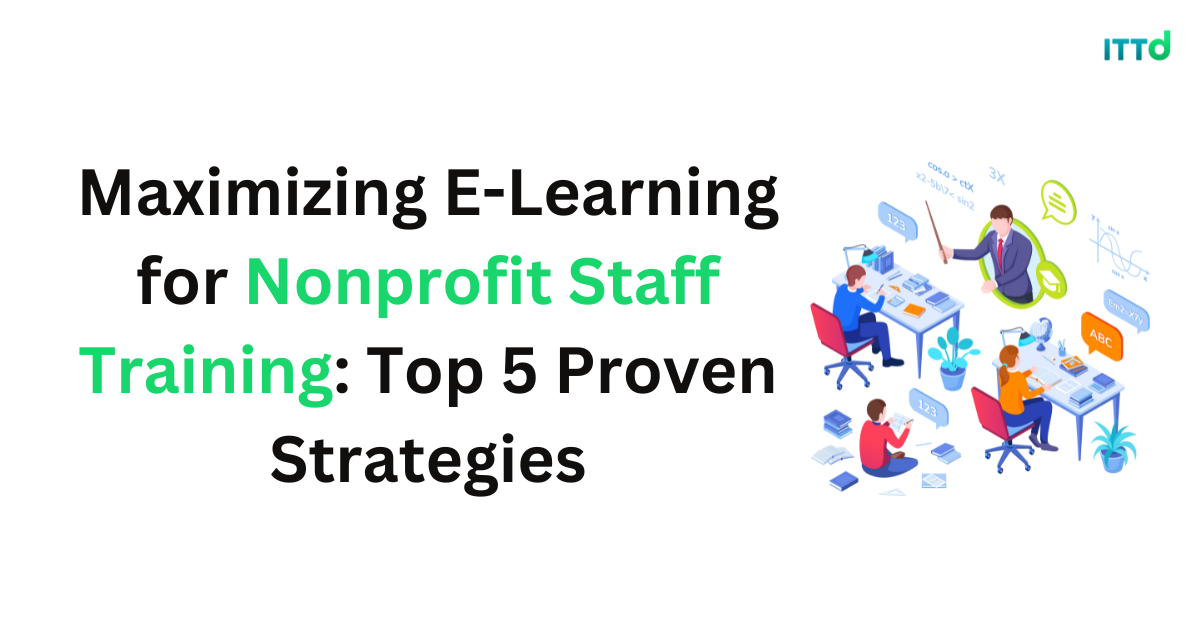In today's digital age, e-learning has emerged as a powerful tool for organizations across sectors. For nonprofits, in particular, e-learning offers an affordable and effective means to train staff, ensuring they are equipped with the necessary skills and knowledge to drive the organization's mission forward. Here are five top tips to make the most of e-learning for your nonprofit staff training:
1. Tailor Content to Your Organization's Mission
Understand the Unique Needs of Your Nonprofit:
Every nonprofit has a unique mission and set of objectives. The first step in creating an effective e-learning program is to understand these unique needs. Instead of opting for generic courses, invest time in customizing content that aligns with your organization's goals.
Engage Subject Matter Experts:
Consider collaborating with experts within your organization or from your network. They can provide insights and content that are directly relevant to your nonprofit's operations. This ensures that the training is not just theoretical but also practical and actionable.
Incorporate Real-life Scenarios:
One of the best ways to make e-learning resonate with your staff is to incorporate real-life scenarios they might encounter in their roles. This not only makes the content relatable but also prepares them for real-world challenges.
Feedback and Iteration:
After rolling out the training, gather feedback from your staff. Understand what worked and what didn't. Use this feedback to iterate and improve the content, ensuring it remains relevant and effective.
2. Choose the Right E-Learning Platform
Evaluate Features and Usability:
There are numerous e-learning platforms available today, each with its own set of features. For a nonprofit, it's crucial to choose a platform that is user-friendly and offers features tailored to your training needs. Look for platforms that allow for content customization, interactive elements, and progress tracking.
Prioritize Security and Accessibility:
Ensure that the platform you choose is secure, especially if you're dealing with sensitive information. Additionally, it should be accessible on various devices, allowing staff to learn on-the-go or from remote locations.
Seek Recommendations and Reviews:
Reach out to other nonprofits or organizations in your network to get recommendations. Online reviews can also provide insights into the platform's reliability and effectiveness.
3. Integrate Interactive Elements
Engage with Multimedia:
Use videos, infographics, and audio clips to make the learning experience more engaging. Multimedia can help explain complex topics in a more digestible manner.
Incorporate Quizzes and Assessments:
Regular quizzes and assessments can help reinforce learning and gauge the effectiveness of the training. They also provide staff with feedback on areas they might need to revisit.
Facilitate Discussions and Collaborations:
Encourage staff to discuss topics, share insights, and collaborate on projects. This fosters a sense of community and enhances the learning experience.
4. Track Progress and Celebrate Achievements
Monitor Learning Metrics:
Use the analytics tools provided by your e-learning platform to track staff progress. Monitor metrics like course completion rates, quiz scores, and time spent on modules to understand engagement levels.
Provide Constructive Feedback:
Regular feedback can motivate staff and help them identify areas of improvement. Ensure that feedback is constructive, highlighting both strengths and areas that need attention.
Celebrate Milestones:
Recognize and celebrate when staff complete courses or achieve high scores. This can be done through certificates, badges, or even small rewards. Celebrating achievements boosts morale and encourages continuous learning.
5. Foster a Culture of Continuous Learning
Encourage Peer-to-Peer Learning:
Promote a culture where staff share their knowledge and insights with peers. This can be done through discussion forums, workshops, or mentoring programs.
Stay Updated with Industry Trends:
The nonprofit sector, like any other, is constantly evolving. Ensure that your training content is updated regularly to reflect the latest trends, tools, and best practices.
Invest in Professional Development:
Beyond the initial training, provide opportunities for staff to further their education and skills. This could be through advanced courses, webinars, or attending industry conferences. Moreover, providing professional development opportunities helps to retain top talent, as employees are more likely to stay with an organization that invests in their career growth. It can also improve overall productivity and job satisfaction, as employees feel more confident and competent in their roles. For instance, an employee working in the healthcare industry may be interested in understanding the latest treatments and medications. If you're wondering how to buy rybelsus or any other relevant medication, providing access to educational resources or support can be an integral part of their development, making them more effective in their job and better equipped to handle complex tasks.
By implementing these five tips, nonprofits can harness the power of e-learning to provide their staff with the skills and knowledge they need. This, in turn, will empower them to contribute more effectively to the organization's mission and objectives.
We'd love to hear from you!



